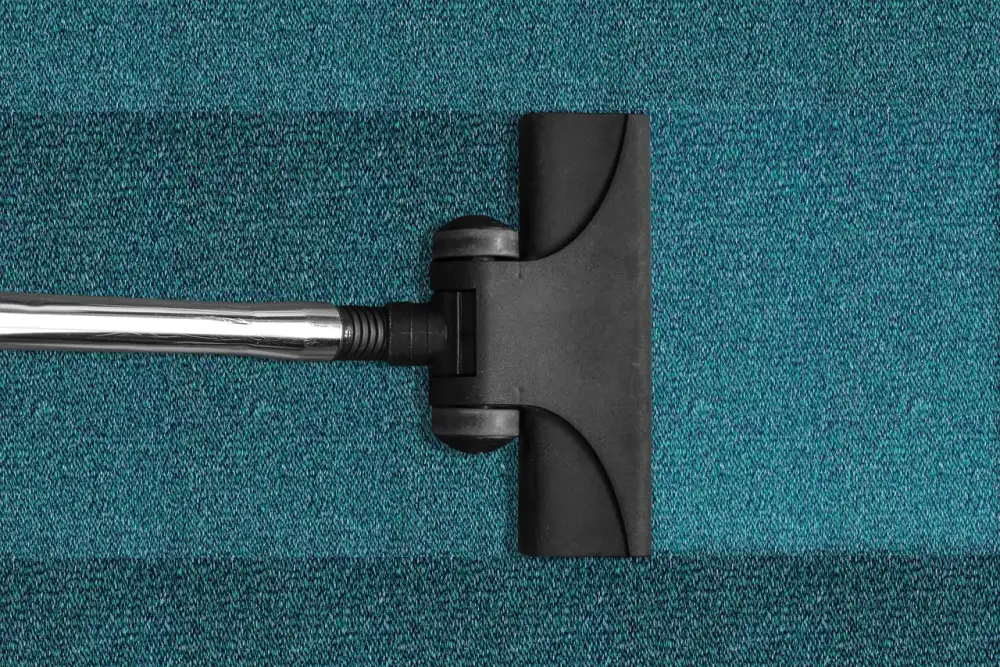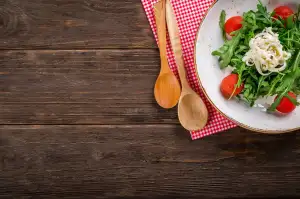Revive Your Rusty Cast Iron: A Step-by-Step Guide on How to Clean Rust Off Cast Iron

- Understanding the causes of rust on cast iron
- Gathering the necessary materials for cleaning
- Step-by-step instructions for cleaning rust off cast iron:
- 1. Preparing the cast iron for cleaning
- 2. Removing loose rust with a stiff brush or scrub pad
- 3. Creating a rust-removing paste using vinegar and salt
- 4. Applying the paste to the rusted areas and letting it sit
- 5. Scrubbing the rusted areas with the paste and a scrub brush
- 6. Rinsing and drying the cast iron thoroughly
- 7. Seasoning the cast iron to prevent future rusting
- Tips for preventing rust on cast iron cookware
Cast iron cookware has been a staple in kitchens for centuries, and for good reason. Its ability to distribute heat evenly and retain it for longer periods makes it ideal for cooking a wide range of dishes. However, to ensure its longevity and optimal performance, proper maintenance is crucial. Regularly cleaning and removing rust from your cast iron cookware not only helps preserve its natural non-stick surface but also prevents the transfer of unwanted flavors to your food. In this guide, we will take you through the step-by-step process of cleaning rust off cast iron, allowing you to revive your rusty treasure and continue enjoying its culinary delights.
Understanding the causes of rust on cast iron
Understanding the causes of rust on cast iron is crucial for effectively preventing and addressing this issue. Rust occurs when iron comes into contact with oxygen and moisture, leading to a chemical reaction called oxidation. When the protective layer of seasoning on cast iron is compromised or damaged, it allows moisture to penetrate the surface, resulting in rust formation. Factors such as improper storage, exposure to water or acidic foods, and inadequate seasoning can all contribute to the development of rust on cast iron cookware. By identifying these causes, we can take proactive measures to maintain our cast iron and prevent rust from forming.
Gathering the necessary materials for cleaning
To effectively clean rust off cast iron, you will need a few essential materials. Firstly, gather a stiff brush or scrub pad to remove loose rust from the surface. Next, acquire white vinegar, which acts as a natural rust remover. Salt is also necessary to create a rust-removing paste. Additionally, you will need a scrub brush to apply the paste and scrub away the rusted areas. Finally, ensure you have access to water for rinsing and drying the cast iron thoroughly after cleaning.
Step-by-step instructions for cleaning rust off cast iron:
4.1. Preparing the cast iron for cleaning: Start by removing any food residue or debris from the surface of the cast iron using hot water and a gentle scrub brush. Avoid using soap as it can strip away the seasoning.
4.2. Removing loose rust with a stiff brush or scrub pad: Use a stiff brush or scrub pad to gently scrub away any loose rust particles from the surface of the cast iron. Be careful not to scrub too hard and damage the seasoning.
4.3. Creating a rust-removing paste using vinegar and salt: Mix equal parts white vinegar and table salt in a bowl to create a paste. The acidity of vinegar helps dissolve rust, while salt acts as an abrasive.
4.4. Applying the paste to the rusted areas and letting it sit: Apply the vinegar and salt paste onto the rusted areas of the cast iron, ensuring that all affected areas are covered. Allow it to sit for at least 15 minutes, but no longer than 30 minutes.
4.5. Scrubbing the rusted areas with the paste and a scrub brush: Using a scrub brush, gently scrub the rusted areas in circular motions, applying some pressure if necessary. Continue until all visible rust has been removed.
4.6. Rinsing and drying the cast iron thoroughly: Rinse off any remaining paste under warm running water, making sure to remove all traces of vinegar and salt mixture from the cast iron surface. Pat dry with a clean cloth or paper towel.
4.7 Seasoning the cast iron to prevent future rusting: To protect against future rusting, apply a thin layer of cooking oil or melted shortening onto the entire surface of the cast iron, including handles and edges. Heat it on low heat for about an hour, then let it cool completely before storing.
Remember, regular maintenance is crucial to keep your cast iron cookware in top shape and prevent rust from forming.
1. Preparing the cast iron for cleaning
Before starting the process of cleaning rust off your cast iron cookware, it is important to properly prepare it. Begin by removing any food residue or debris from the surface of the cast iron. Use a stiff brush or scrub pad to scrub away any loose particles.
Next, fill a sink or basin with hot water and a mild dish soap. Place the cast iron in the soapy water and allow it to soak for a few minutes. This will help loosen any stubborn dirt or grime that may be present.
After soaking, use a sponge or cloth to gently scrub the surface of the cast iron, paying special attention to any areas with rust. Avoid using harsh abrasives or steel wool as they can damage the seasoning of the cast iron.
Once you have thoroughly cleaned the cast iron, rinse it under running water to remove any remaining soap residue. Make sure to dry it completely using a clean towel or by placing it on low heat on your stovetop.
By properly preparing your cast iron before cleaning, you ensure that you have a clean surface ready for rust removal and prevent further damage to your cookware.
2. Removing loose rust with a stiff brush or scrub pad
To remove loose rust from your cast iron cookware, start by using a stiff brush or scrub pad. Gently scrub the surface of the pan, focusing on the areas with visible rust. This will help to loosen and remove any loose particles of rust that may be present. Be careful not to scrub too aggressively, as this can damage the seasoning of the cast iron. Once you have removed as much loose rust as possible, proceed to the next step in the cleaning process.
3. Creating a rust-removing paste using vinegar and salt
To create a rust-removing paste for your cast iron, you will need two common household ingredients: vinegar and salt. Vinegar is acidic and helps to dissolve the rust, while salt acts as an abrasive to scrub away the rust particles.
Start by mixing equal parts of vinegar and salt in a bowl until it forms a thick paste. You can adjust the quantities depending on the size of your cast iron and the extent of rusting. The paste should be easy to spread but not too runny.
The acidity of the vinegar will react with the rust, causing it to loosen from the surface of the cast iron. The salt will provide gentle abrasion to help remove any remaining stubborn rust spots.
Remember that vinegar has a strong smell, so make sure you are working in a well-ventilated area or consider wearing a mask if necessary.
Once you have prepared the rust-removing paste, you are ready to move on to the next step in cleaning your cast iron cookware.
4. Applying the paste to the rusted areas and letting it sit
Once you have created the rust-removing paste using vinegar and salt, it's time to apply it to the rusted areas of your cast iron cookware. Using a brush or sponge, generously spread the paste onto the affected areas, making sure to cover all the rust completely. Allow the paste to sit on the rust for at least 15-20 minutes. This will give the vinegar and salt enough time to break down and dissolve the rust. The acidic properties of vinegar help to loosen and remove rust effectively. Letting it sit also allows for deeper penetration into stubborn rust spots, ensuring thorough cleaning.
5. Scrubbing the rusted areas with the paste and a scrub brush
4.5. Scrubbing the rusted areas with the paste and a scrub brush
Once the rust-removing paste has been applied to the rusted areas of your cast iron cookware, it's time to start scrubbing. Using a scrub brush or a stiff brush, gently but firmly scrub the rusted areas in circular motions. The abrasive nature of the salt and vinegar paste will help to loosen and remove the rust.
Be sure to pay extra attention to any stubborn or heavily rusted spots, applying more pressure if necessary. Continue scrubbing until you can no longer see any visible signs of rust on the surface of your cast iron.
Remember to be gentle while scrubbing to avoid damaging the seasoning or surface of your cookware. It's important to strike a balance between removing the rust and preserving the integrity of your cast iron.
Once you're satisfied with the results, proceed to rinse off all traces of the paste under running water. Make sure to thoroughly dry your cast iron cookware using a clean towel or by placing it in a warm oven for a few minutes.
By following this step-by-step guide, you'll be able to effectively remove rust from your cast iron cookware and restore its natural beauty and functionality.
6. Rinsing and drying the cast iron thoroughly
Once you have scrubbed the rusted areas with the paste and a scrub brush, it is crucial to rinse and dry the cast iron thoroughly. Rinse off all the paste residue under running water, making sure to remove any remaining rust particles. Use a clean cloth or paper towels to dry the cast iron completely. Moisture left on the surface can lead to further rusting, so ensure that every nook and cranny is dry. Leaving it to air dry may cause water spots or even more rust formation. Take your time and be thorough in this step to prevent any future rust from developing on your cast iron cookware.
7. Seasoning the cast iron to prevent future rusting
Seasoning the cast iron is a crucial step in preventing future rusting. After cleaning and drying the cookware, apply a thin layer of oil to the entire surface. This creates a protective barrier that prevents moisture from coming into contact with the iron, thus reducing the risk of rust formation. Common oils used for seasoning include vegetable oil, canola oil, or flaxseed oil. Heat the cast iron in an oven at a high temperature for about an hour to allow the oil to polymerize and form a durable non-stick coating. Repeat this process periodically to maintain the seasoning and keep your cast iron cookware rust-free for years to come.
Tips for preventing rust on cast iron cookware
To prevent rust on your cast iron cookware, follow these tips:
1. Dry thoroughly: After cleaning, make sure to dry the cast iron completely to remove any moisture that can lead to rust formation.
2. Season regularly: Apply a thin layer of oil or fat to the surface of the cast iron after each use. This creates a protective barrier against moisture and helps maintain its non-stick properties.
3. Store properly: Store your cast iron in a dry place with good ventilation. Avoid stacking multiple pieces together as this can trap moisture and promote rusting.
4. Avoid soaking: Do not soak your cast iron in water for extended periods as this can cause rust. Instead, hand wash it promptly with minimal water and mild soap if necessary.
5. Use gentle cleaning methods: Avoid using harsh abrasives or metal scrubbers that can damage the seasoning and expose the metal to rusting. Opt for soft brushes or nylon scrub pads instead.
6. Re-season when needed: If you notice signs of rust or loss of seasoning, re-season your cast iron by applying a fresh coat of oil and baking it in the oven at a low temperature.
By following these tips, you can keep your cast iron cookware in excellent condition and enjoy its benefits for years to come.
In conclusion, regular maintenance is crucial for preserving the longevity of your cast iron cookware. By taking the time to clean and season your cast iron properly, you can prevent rust from forming and ensure that it remains in excellent condition for years to come. Neglecting proper care can lead to a decline in performance and even render your cast iron unusable. So, make it a habit to clean, dry, and season your cast iron after every use. By doing so, you'll be able to savor the flavors of life with your well-maintained cast iron cookware for generations.
Published: 21. 02. 2024
Category: Home



